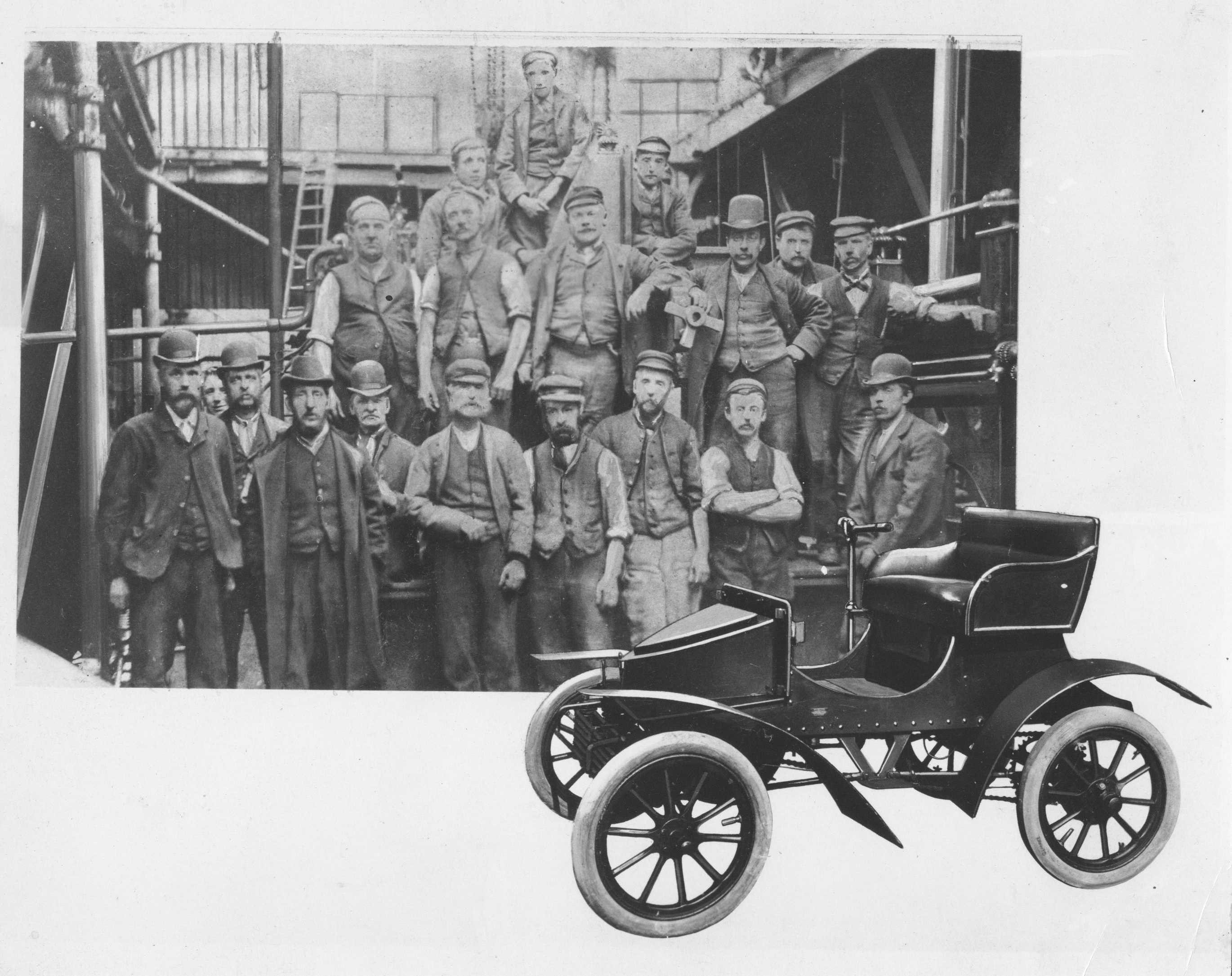
Vauxhall, the Oval and Kennington
Alexander Wilson set up in business in 1857 (as Alexander Wilson & Co, Engineers) in the Vauxhall Iron Works in Wandsworth Road. He manufactured marine engines and other engineering items and took the Fulk's griffin (see the separate history of Vauxhall) as his company badge. He had left the company by 1894 and in 1897 the company's name was changed to the Vauxhall Iron Works Co Ltd.

The company developed a small 1 cylinder marine petrol engine and this was used to power a small river launch named the Jaberwock. This engine was then used as the basis for their "horseless carriage", of which the first was sold on 1 May 1903. They eventually built 40 five horse power "A719"s. The car was built in two versions - a two seater as in the photo above - and a four seater, of which two of the 1903 versions remain in existence. Interestingly, the company's marine heritage led to the car having tiller steering, like a small yacht, rather than a steering wheel. And it had no reverse gear. The two seater version sold for 130 guineas (£136.50) and the four seater for £154.
One of the 1903 four seaters, and a 1904 two seater, are now in the company's heritage collection in Luton and can be viewed by appointment. The other 1903 four seater is on loan to the Science Museum. It is stored at their Wroughton site, just south of Swindon, and can be seen either by appointment or on certain open days. Phone 01793 814 466. See also Wroughton's website
|
|
The company's 1903 car starred in a 2003 Vauxhall centenary rally featuring Vauxhall Cars from 1903 to the present day. The link at the end of this paragraph leads you to a page of photos which can be magnified by clicking the icon which appears when you place your mouse over the bottom right hand corner. The rally began, appropriately enough, next to the Sainsbury's car park, the site of the original Vauxhall factory - see below. Click here to see the photos of the 1903 car. |
The company expanded into a number of premises in the Vauxhall area. The main factory was on what is now the Sainsbury's petrol station on Wandsworth Road opposite the end of Wyvil Street. Panel beating took place in what became the Myers bed factory in Tyers Street - but the need for more working space caused the company to move to Luton in 1905. (One wonders whether Luton was chosen partly because of the original link with Fulk le Breant and his griffin.)